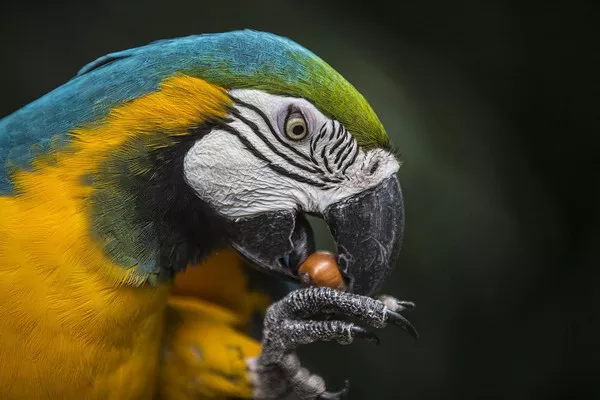What is osphronemus goramy?
Lucky fish, Osphronemus goramy (Lacepède, 1801), also known as warship, long silk perch, originating in Vietnam, Thailand, Malaysia, etc. A species of fish of the genus Perch. The fish of this family are generally small in size, but Lucky is the giant in this family of fish. Adult fish are 20 to 69 cm long and oval in shape. The body color is gray-brown, and the pelvic fins are changed into two long silk fins, each fin is light red. The feeding water temperature is 22-32 degrees Celsius, the water quality requirements are not strict, and it is easy to raise. The breeding water temperature is 26 to 27 degrees Celsius. The tip of the dorsal fin of the male fish is long and it is a foam oviparous fish. Floating a few aquatic plants on the water surface of the aquarium, put a pair of broodstock in, the male fish protrudes a lot of foam on the water surface, and the fertilized eggs protrude into the foam to hatch. Females lay 500 to 1000 eggs each time. It is very territorial and will attack other fish. It is not recommended to mix with other fish.
What does osphronemus goramy look like?
Body flat, oval, high and broad back; small head, with prominent frontal horns on top and sides (like helmet armor); prominent snout, large mouth cleft, prominent mandible, and small upper jaw; pelvic fins are changed into two long The fin wire (like the oars of the sampan, so it is commonly known as the sampan fish) extends to the tail of the body, the anal fin is extended backward, but is not connected to the caudal fin, and the caudal fin spine is fan-shaped and straight. The tip of the dorsal fin of the male fish is long. Body surface gray-brown (dark stripes in juveniles), light red on all fins. The body weight of 18-month-old individuals is 0.5 to 1.0 kg; the maximum body weight can reach 20 kg.
Body length 10 ~ 15cm, oval. The body color is gray-brown, and the pelvic fins are changed into two long silk fins, each fin is light red.
osphronemus goramy living habits
It lives in estuary waters with a water depth of more than 2 meters, and inhabits slow-flowing areas. It is rarely found in rivers with rapid water or high flow velocity; it likes clusters and swims vertically up and down. When the water temperature drops below 12 °C, it will be frostbitten or even frozen to death; the suitable growth water temperature is 19 to 33 °C, and the optimum is 23 to 28 °C. Survival salinity below 20. It has strong resistance to hypoxia, the dissolved oxygen required for normal growth is 3 mg/liter of water, and the suffocation point is 0.3 mg/liter of water.
osphronemus goramy rearing
1. Insulation. This species is a tropical fish and has strict temperature requirements. The suitable water temperature is 22 to 32 °C. When it is rainy or cold, the water should be heated up in time. Usually, the depth of the pool water should be maintained. The sudden change is not conducive to the growth of broodstock. When the water temperature is too high, add cold water in time.
2. Water retention. One is to ensure that the water depth is above 2 meters; the other is to ensure the water source. It is necessary to ensure the timely and sufficient supply of cold and hot water; the third is to ensure the water quality, keep the water quality fertile, alive, tender and cool, with a transparency of more than 35 cm. Always add new water, generally 2 to 3 times a month, 10 to 20 cm of water each time, drain the old water before adding water, and appropriately increase the number of water changes and the amount of water in summer. Each incubation pool should be equipped with an aerator for timely oxygenation or first aid. During the winter season, in fine weather, the insulation cover can be properly uncovered to facilitate the exchange of air circulation.
3. Food security. First, to ensure the nutrition of the food, the food requirements are fresh feed with high protein content, and cannot be fed with rotten and nutrient-deficient food; second, the amount of food is guaranteed. The food table is hygienic. It is necessary to clean the food table frequently, remove the residual bait and sundries, and often hang the basket for disinfection.
4. Disease prevention. Prevention should be the main priority for the diseases of the long silk perch. The specific preventive measures are: (1) Keep the temperature of the pool water above 20 degrees; (2) Regularly use quicklime 10-15 kg/mu (once a week) to disinfect the water body, which can also be used 1ppm bleaching powder solution; (3) sulfa drugs can be mixed with bait for feeding; (4) water quality should be adjusted in time, and the food table should be cleaned and disinfected frequently. The common viruses of the silk perch include printing disease, red skin disease and anchor crab disease, which can generally be cured by prescribing the right medicine. Generally, under the premise of doing a good job of preventive work, plus proper feeding, the long silk perch will not suffer from diseases.
5. Prevention. The first is to remove the weeds around the pond and beware of livestock and poultry; the second is to stay on duty all day during the winter, and to deal with hidden dangers in a timely manner. Pay close attention to the rainy, hot, and sudden cold weather, and watch them frequently. The third is to guard against theft.
For stocking in aquariums, it is recommended to use an aquarium larger than 1 meter. Suitable for polyculture with most fish of similar size, males will fight and occasionally bully other fish smaller than him.


























